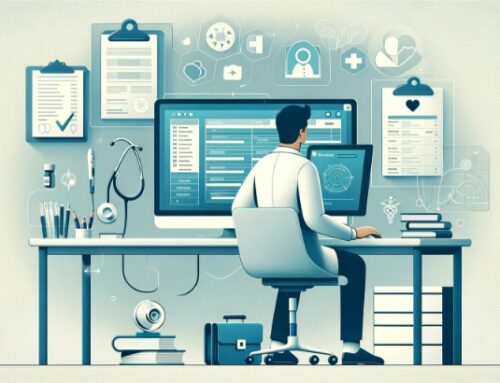Have you ever wondered how medical data entry services can improve the efficiency of healthcare organizations? Well, you’re in luck! In this article, we will explore how these services can revolutionize the healthcare industry. By utilizing automated data entry processes, healthcare organizations can save time and effort manually inputting patient information.
Real-time updates on patient records allow for prompt and accurate treatment decisions. Streamlined communication between departments ensures seamless coordination and collaboration. Efficient billing and coding procedures result in quicker reimbursement and reduced errors. Additionally, quick access to patient records and reduced paperwork and administrative tasks further enhance the overall efficiency of healthcare organizations. So, let’s dive in and discover how medical data entry services can transform healthcare delivery!
Automated Medical Data Entry Services
Automated data entry processes can significantly enhance healthcare organizations’ efficiency by streamlining and simplifying the collection and management of medical information. With the advent of technology, automated data extraction has become a game-changer in the healthcare industry. By leveraging advanced algorithms and machine learning capabilities, healthcare organizations can extract relevant information from various sources, such as medical records, lab reports, and insurance claims, without manual entry.
One of the key benefits of automated data extraction is the improvement in data accuracy. Manual data entry is prone to human errors, such as typos or misinterpretation of information. Automated processes significantly reduce the risk of these errors, ensuring that the collected data is accurate and reliable. This accuracy is crucial in healthcare, where even a tiny mistake can significantly affect patient care and treatment.
Moreover, automated data entry processes also save time and resources for healthcare organizations. By automating the collection and input of medical information, healthcare professionals can focus their time and energy on more critical tasks, such as patient care and data analysis. Additionally, the streamlined and simplified process reduces the need for manual data entry, minimizing the administrative burden and freeing up resources that can be allocated to other areas of the organization.
Real-Time Updates on Patient Information
To ensure efficient healthcare processes, medical data entry services provide real-time updates on patient information. This allows healthcare organizations access to the most up-to-date and accurate data, enabling them to make informed decisions and provide timely care. Here are some ways in which real-time updates on patient information can improve the efficiency of healthcare organizations:
-
Remote Monitoring: Medical data entry services can facilitate remote monitoring of patient’s health conditions. Healthcare providers can remotely monitor vital signs, symptoms, and medication adherence by continuously updating patient information. This allows for timely intervention and reduces the need for unnecessary hospital visits.
-
Interoperability Solutions: Real-time updates on patient information enable interoperability between different healthcare systems. By integrating data from various sources, such as electronic health records, wearable devices, and telehealth platforms, healthcare organizations can comprehensively view the patient’s health status. This improves care coordination, reduces duplication of tests, and enhances the overall efficiency of healthcare delivery.
Streamlined Communication Between Departments
Streamlined communication between departments is essential for enhancing the efficiency of healthcare organizations. Collaboration and enhanced coordination among departments can improve patient care and operational effectiveness. By implementing medical data entry services, healthcare organizations can ensure that accurate and up-to-date information is shared seamlessly between departments.
Efficient communication between departments is crucial for effective decision-making and timely response to patient needs. With streamlined communication, healthcare professionals can access patient records, share test results, and coordinate treatment plans. This eliminates the need for manual data transfer, reducing the risk of errors and delays.
Medical data entry services play a vital role in facilitating this streamlined communication. They ensure patient information is accurately recorded and readily available to all relevant departments. With a centralized database, healthcare professionals can access patient records in real-time, enabling them to make informed decisions and provide timely care.
Furthermore, improved collaboration between departments can lead to better resource allocation and cost management. When departments can communicate efficiently, they can share information about available resources, such as equipment and personnel, and make informed decisions about their allocation. This helps in optimizing the utilization of resources and reducing unnecessary costs.
Streamlined communication between departments sets the stage for efficient billing and coding procedures. Seamlessly sharing patient information allows healthcare organizations to ensure accurate and timely billing, reducing billing errors and improving revenue cycle management. Efficient communication between departments facilitates effective coding, ensuring accurate documentation and reimbursement.
Efficient Billing and Coding Procedures
Efficient billing and coding procedures are crucial for healthcare organizations to maintain a streamlined reimbursement process and ensure accurate coding submissions. By implementing medical data entry services, healthcare organizations can improve the efficiency of their billing and coding procedures, reducing errors and minimizing billing delays. These services automate the data entry process, allowing for faster and more accurate coding, resulting in improved revenue cycle management and increased overall efficiency.
Streamlined Reimbursement Process
By implementing effective billing and coding procedures, medical data entry services can significantly enhance the reimbursement process for healthcare organizations. This streamlined reimbursement process leads to improved revenue optimization and efficient claims management. Here’s how medical data entry services achieve this:
- Accurate coding: Medical data entry services ensure the correct codes are assigned to each procedure and diagnosis, reducing the chances of claim denials and rejections.
- Timely submission: These services ensure that claims are submitted promptly, minimizing delays in reimbursement.
- Compliance with regulations: Medical data entry services stay updated with the latest coding and billing guidelines, ensuring compliance with regulatory requirements.
- Error detection and correction: These services use advanced software tools to identify and rectify any billing errors, reducing the likelihood of claim denials.
- Enhanced revenue cycle management: By streamlining the reimbursement process, medical data entry services optimize revenue collection and improve cash flow for healthcare organizations.
Accurate Coding Submissions
To improve the efficiency of healthcare organizations, medical data entry services can achieve accurate coding submissions through efficient billing and coding procedures. Accurate coding is crucial for healthcare organizations as it ensures proper reimbursement and reduces the risk of claim denials or audits. Medical data entry services employ coding specialists trained to assign the appropriate codes to medical procedures, diagnoses, and treatments accurately. These specialists also perform coding validation, which involves reviewing codes for accuracy and completeness. By implementing efficient billing and coding procedures, medical data entry services can help healthcare organizations maintain coding accuracy and compliance with industry standards. This streamlines the reimbursement process, minimizes financial losses, and improves overall operational efficiency.
Quick Access to Patient Records
Ensure seamless and immediate retrieval of patient records with the help of medical data entry services. Healthcare organizations can improve patient care and enhance data security by leveraging these services. Here’s how:
-
Improved Patient Care
-
Quick access to patient records allows healthcare professionals to make more informed decisions about diagnosis and treatment plans.
-
With immediate access to patient history, medical data entry services enable healthcare providers to identify trends, monitor progress, and personalize care plans accordingly.
-
Data Security
-
Medical data entry services employ stringent security measures to protect patient records from unauthorized access or breaches.
-
By storing patient records electronically, healthcare organizations can reduce the risk of physical damage or loss associated with paper-based records.
Reduced Paperwork and Administrative Tasks
When utilizing medical data entry services, you can experience a significant reduction in paperwork and administrative tasks. These services streamline the data entry process, eliminating the need to enter patient information into paper-based records manually. By digitizing and automating data entry processes, healthcare organizations can reduce the amount of paperwork that needs to be processed and stored. This saves time and reduces the risk of errors that can occur during manual data entry.
One of the key advantages of medical data entry services is the improved data accuracy they offer. Manual data entry is prone to errors, such as typos, illegible handwriting, or incorrect transcription of information. These errors can have severe consequences for patient care and lead to treatment delays or even medical errors. Medical data entry services significantly reduce the risk of such errors. Automated processes ensure that information is accurately captured and stored in electronic health records, making it easier for healthcare professionals to access and utilize patient data.
Frequently Asked Questions
What Are the Potential Drawbacks or Challenges of Implementing Automated Data Entry Processes in Healthcare Organizations?
Automated data entry processes in healthcare organizations can have potential drawbacks or challenges. Data accuracy may be compromised if not properly implemented, and staff training is essential for successful integration.
How Can Real-Time Updates on Patient Information Enhance the Quality of Care Provided by Healthcare Organizations?
Real-time updates on patient information, made possible by electronic health records and real-time analytics, enhance the quality of care provided by healthcare organizations. It allows for better coordination, faster decision-making, and improved patient outcomes.
What Are Some Effective Strategies to Ensure Streamlined Communication Between Different Departments Within Healthcare Organizations?
Use effective strategies and collaboration techniques to ensure streamlined communication between different departments in healthcare organizations. This will improve efficiency and coordination, improving patient care and outcomes.
How Do Efficient Billing and Coding Procedures Contribute to the Overall Efficiency of Healthcare Organizations?
Efficient billing and coding procedures contribute to the overall efficiency of healthcare organizations. They improve the revenue cycle, reduce errors, optimize reimbursement, and ensure accurate documentation. It’s essential to implement effective strategies for streamlined communication between different departments.
Can Quick Access to Patient Records Lead to Any Privacy or Security Concerns?
Quick access to patient records can lead to privacy concerns and security risks. Healthcare organizations must implement strong security measures and protocols to safeguard patient data and prevent unauthorized access or breaches.




